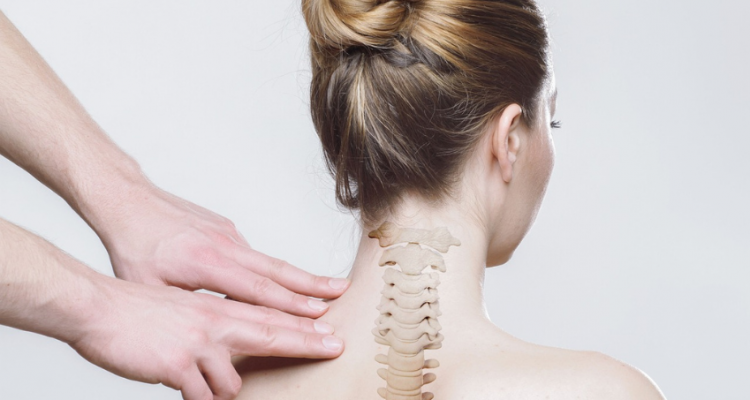A stiff neck and tense shoulders – most people don’t take these problems seriously enough. It is surprisingly common for people with poor eyesight and degenerative eye diseases such as macular degeneration (AMD) and glaucoma to have a stiff neck and tense shoulders.
Anyone who sits in front of a computer for hours on end, for example, tenses the muscles in the entire shoulder area that are responsible for this posture. This tension can spread to the neck and impede blood flow to the brain and eyes.
There is therefore a direct link between neck and shoulder stiffness on the one hand and our eyesight on the other.
Blood circulation in degenerative eye diseases such as Macular Degeneration (AMD) and Glaucoma
The blood supply to the brain is ensured by three large arteries that ascend through the neck to the head: the internal carotid artery, the external carotid artery and the vertebral artery. The basilar artery, the ophthalmic artery and the ciliary artery are specifically responsible for supplying the eyes.
In addition to the large muscles in the neck and shoulder area, the trapezius muscle and the so-called head nodder, there are a large number of small muscles and muscle bundles which, when stiffened, obstruct the blood vessels and nerves and impair the overall blood supply to the head.
Scientific studies have shown that shoulder and neck stiffness can reduce the blood supply to the brain to such an extent that it eventually has to make do with a quarter of the normal amount of blood. It’s like being strangled.
The smartphone neck
The typical computer posture not only stiffens the muscles, but can also damage the bones. If you stare at the screen for long periods of time, you hardly notice how you tuck your chin in and fix your head and neck in this position.
Over time, the cervical spine loses its natural curve and becomes straighter. Today, this is known as “smartphone neck”, which can also be caused by working at a computer.
This change in the cervical spine then in turn triggers a stiff shoulder and the two together not only weaken our vision, but can also lead to headaches, dizziness and nausea.
If the blood supply to the brain is severely restricted, the release of hormones can even be impaired, which can lead to depression.
Physiotherapy – an important component
Integrated eye therapy according to Noll consists of 4 treatment elements, an important element alongside eye acupuncture according to Boel is physiotherapy. We do not solve the problem with massages, but with suitable techniques designed to stimulate blood circulation.
Relaxation exercises for neck and shoulders
You can do the following exercises regularly. In between working at the computer and then again after work. They not only relieve tension, but also prevent smartphone neck.
Relaxation exercise for the neck
- Clasp your hands behind your head and push it forwards while pushing your head backwards (10 seconds).
- Support yourself with your elbows and rest your chin in your hands. In this position, push the chin forwards to stretch the neck (10 seconds).
- Hold the right side of your head with your left hand and tilt your head to the left.
Loosening exercises for the shoulders
- Clasp your hands behind your head to move and stretch first one shoulder and then the other sideways (10 seconds each).
- Lift both shoulders up and make small circular movements, making 10-15 circles in one direction and then in the opposite direction.
- Raise one arm sideways and bend it, then grasp the elbow with the opposite hand and gently stretch the shoulder for 15-20 seconds before switching sides.


Leave a Reply